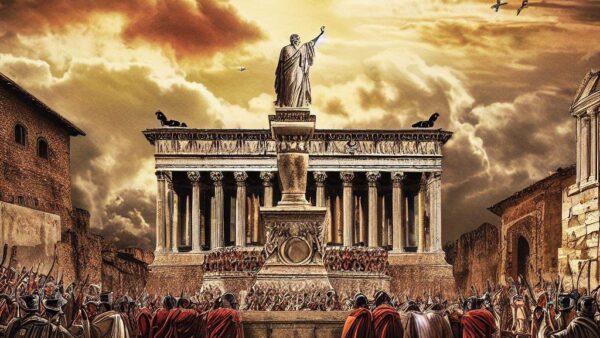Every conclave has had its peculiarities and oddities: here we have gathered the most surprising ones from History.
The word conclave (from the Latin “cum clave,” literally meaning under lock and key) to indicate the place and the assembly entrusted with the election of popes, made its official appearance in 1274: but its origin is to be sought in a bizarre episode a few years earlier.
The event began on November 29, 1268, in Viterbo (where the 183rd successor of Peter, Clement IV, had recently passed away) and concluded on September 1, 1271, with the election of Gregory X after the longest period of sede vacante (vacant see) in the history of the papacy (33 months). The reason for the delay: the maxima discordia (greatest discord) among the 19 cardinals (later reduced to 17 due to the death of 2), mainly due to political disagreements.
Under the Rain. After weeks of internal debates and heavy external pressure, the cardinals decided to lock themselves in the great hall of the papal palace in Viterbo, under the protection of the municipal authorities. In the autumn of 1269 (when a whole year had already passed), the podestà (chief magistrate) decided to tighten the confinement to induce the cardinals to hurry, but time continued to pass without result and on June 1, 1270, the local population, impatient, stormed the papal palace, unroofing it.
Human Weaknesses. Cramped clothes, crowded toilets, political differences… even the election of popes has to contend with human weaknesses. Probably the intervention only rendered some rooms unusable (including the toilets) and in any case, the roof was repaired after only a few weeks… and so the stalemate continued until September 1, 1271, when a restricted college of only 6 cardinals finally elected an archdeacon from Piacenza who was outside the ongoing political games.
The episode, however, left its mark and in 1274, the new rules of the conclave were made official, remaining in force until today (albeit with many “relaxations,” especially in the last century): no contact with the outside world, under penalty of excommunication, community life in a hall, a single dish for both lunch and dinner and, after five days, only bread, water, and a little wine.
Let’s Not Bring Politics into It. These rules perhaps made decisions faster, but they certainly did not stop the pressure from the powerful. The most audacious was Philip II, King of Spain, who in 1590 placed his veto on no fewer than 30 cardinals, and even ordered that the new pope be chosen from a list of 7 names explicitly cited by him. Philip II’s arrogance created a custom called the “right of exclusive”: in practice, it was a power of veto over unwelcome names, granted to the great Catholic powers.
A custom that lasted until 1903, when Cardinal Jan Puzyna (prince-bishop of Krakow) rose during the conclave to announce the veto of the Austrian Emperor Franz Joseph on Cardinal Mariano Rampolla, who was notoriously pro-French and hostile to the Triple Entente of Austria-Germany-Italy. The veto was rejected by the indignant cardinals but, after several votes, a politically more neutral candidate was elected, such as the Patriarch of Venice Giuseppe Sarto (Pius X). It is possible, therefore, that the veto had some effect. Since then, however, the custom was considered de facto abrogated.
A Strange Process. Among the many regulatory changes introduced in the last century, there is one particularly curious one: in 1962, John XXIII introduced the prohibition of photographing the body of the former pontiff before vesting him in episcopal robes. This was all due to the invasiveness of the newspapers which, in 1958, had bought from the pontifical archiatrist (physician), and published with great prominence, images of Pius XII on his deathbed.
A bad episode, no doubt, but not even comparable to the desecration inflicted in 896 on Pope Formosus, guilty of having crowned an emperor unwelcome to his successor Stephen VI: the latter ordered the mummified corpse of Formosus to be exhumed, dressed in pontifical vestments, and placed on a throne to be interrogated and subjected to a trial. At the end of which, not having defended himself adequately, the body was condemned to be thrown into the Tiber after having suffered the amputation of the three fingers used for blessings. Truly “medieval stuff,” as they say.
Novelties. The more recent rules are more easily justifiable: Paul VI, for example, wanted to take into account the lengthening of human life by excluding cardinals over eighty years old from the conclave. And he facilitated the choice of the new pontiff by admitting a runoff, or a simple majority, after 30 inconclusive ballots. The novelties introduced by John Paul II are also products of their time: he established, for example, that the election must take place in the Sistine Chapel (which has happened since 1878, but the possibility had been considered of proposing the election of a pontiff where his predecessor died, for example, during a trip abroad).
He also maintained the “ordinary way,” meaning the ballot, as the only valid procedure, abolishing two methods still formally in force: the “compromise” (as in Viterbo) and the so-called “inspiration” (i.e., the unanimous acclamation “by viva voce” by the cardinals). The age limit of 80 for cardinals remains confirmed. For the older cardinals, however, there is the possibility of still making their opinions count in the two daily meetings of the full College of Cardinals, during the 15 days of waiting between the death of the pope and the opening of the conclave.





